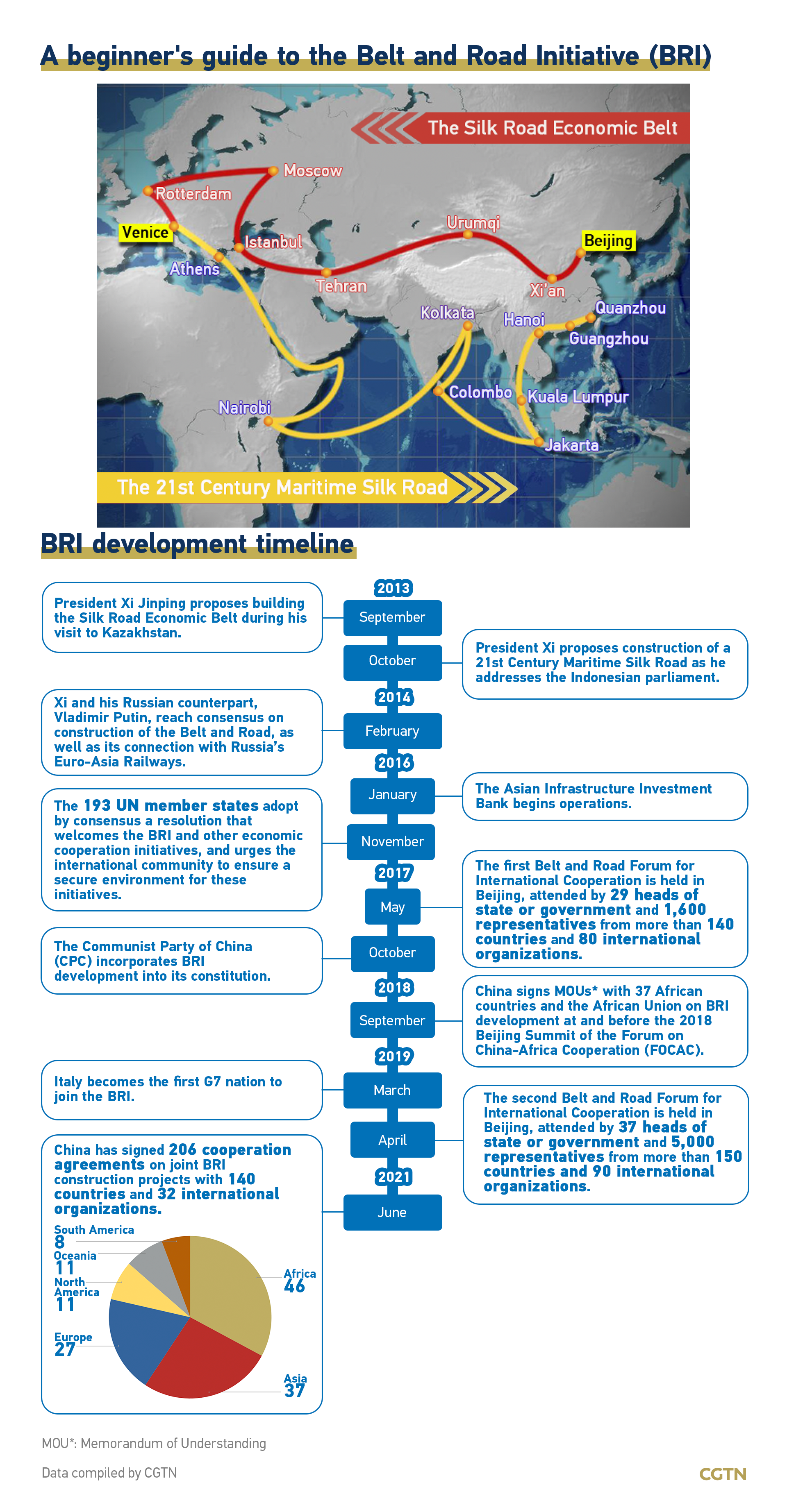The Belt and Road Initiative (BRI) was proposed by Chinese President Xi Jinping in 2013 to improve regional connectivity and economic integration, while also benefiting people's livelihoods and welfare.
Eight years on, Xi's vision has become a reality in terms of policy coordination, infrastructure upgrades, unimpeded trade flows, financial integration and closer people-to-people ties.

A total of 172 countries and international organizations have signed over 200 cooperation agreements with China on the joint construction of the Belt and Road. A 2019 World Bank study predicts that the BRI will help lift 7.6 million people out of extreme poverty and 32 million people out of moderate poverty globally.
Besides, the China-Europe Railway Express, a freight rail network connecting China and Europe along the New Silk Road, plays a crucial role linking BRI-participating countries.
The railway's unique strengths have been shown during the COVID-19 pandemic – allowing a large amount of cargo to be transported at a time when daily necessities and medical aid are badly needed.
In 2020, a total of 12,406 trains ran routes under the project, registering a 50-percent year-on-year increase, and 7.3 times the number for 2016. Over 1.1 million standard cases of product were transported, and among them there were 9.3 million pieces of COVID-19 essentials, weighing 76,000 tonnes.
"The BRI may be China's idea, but its opportunities and outcomes are going to benefit the world. China has no geopolitical motives, seeks no exclusionary blocs, and imposes no business deals on others," Xi said at the opening ceremony of the Belt and Road Forum for International Cooperation in Beijing in 2017.
"China will continue to act in the principle of extensive consultation, joint contribution and shared benefits, and pursue open, green and clean cooperation under the BRI."

